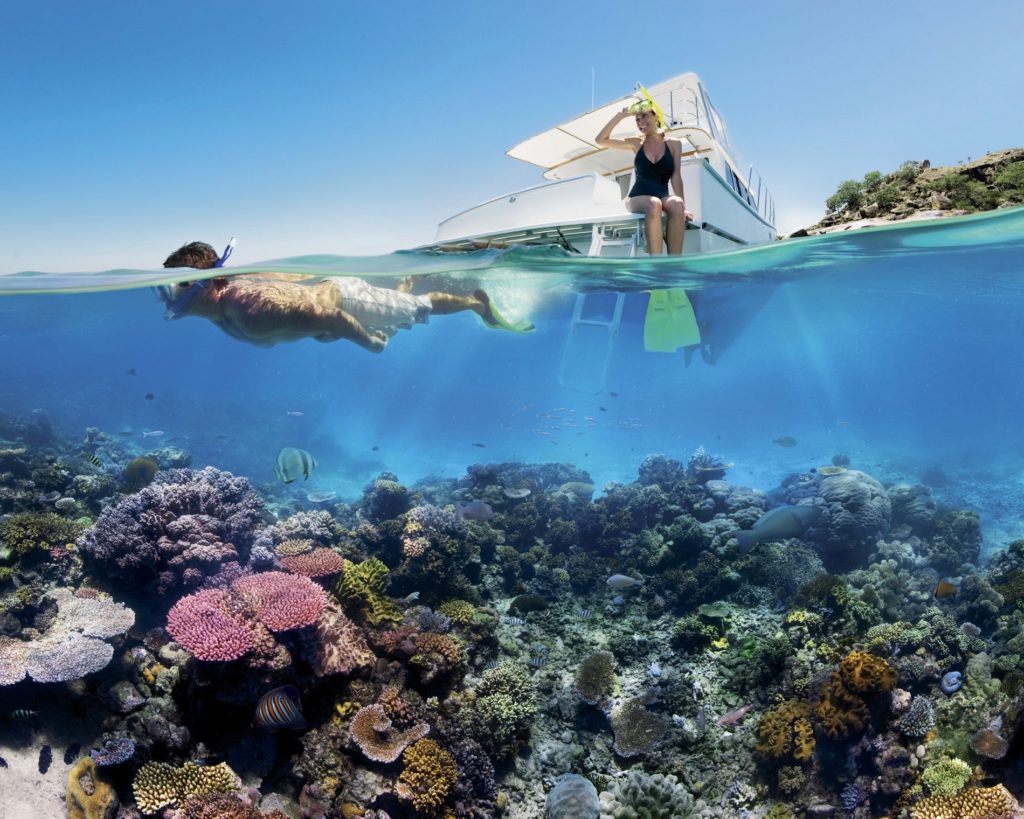
REEF-SAFE SUNSCREEN: WHAT YOU NEED TO KNOW
You may have seen a thing or two in the news recently regarding Hawaii’s ban on chemically based sunscreen. The state passed a bill that will prevent the sale of sunscreen containing common UV-filtering ingredients, such as oxybenzone and octinoxate. Why is this important? Because both have been linked to coral bleaching.
We know that reefs are suffering at the hands of global climate change due to rising ocean temperatures, as the stress of warm water causes corals to bleach. In addition, scientists now say that chemically based sunscreen can induce the same bleaching response in coral. Studies have shown that oxybenzone and octinoxate are found in over 3,500 sunscreen products, including household names like Tropicana, Banana Boat, and Coppertone. When corals absorb these chemicals, they have a similar reaction as they would if surrounding water temperatures were to get too warm. In addition, the presence of these chemicals in sea water allows viruses to thrive, putting corals at high risk of catching an infection that could lead to bleaching and death.
Areas such as Oahu’s Hanauma Bay off the coast of the Hawaii, sees close to a million tourists each year, which makes it highly susceptible to sunscreen-induced coral bleaching. In 2015, a nonprofit based out of St. John surveyed a popular beach on the island, estimating that with 2,000 to 5,000 swimmers using the beach daily, over 6,000 pounds of sunscreen would be deposited into the reef annually. And with tourists swimming, diving, and snorkeling on only a small portion of the world’s reefs, the pounds add up.
WHEN YOU’RE SHOPPING FOR SUNSCREEN, HERE ARE SOME KEY THINGS TO LOOK FOR:
The absence of oxybenzone and octinoxate in listed ingredients. These two chemicals are harmful to corals and can cause sunscreen-induced coral bleaching, so look for them in the ingredient list. Their absence points the product being reef-safe.
Mineral based sunscreen with the ingredients zinc oxide and titanium dioxide. Sunscreens made with zinc oxide and titanium dioxide are mineral-based, so rather than being absorbed like traditional sunscreen, the particles of these ingredients sit on top of the skin and block harmful UV rays. These ingredients are less harmful to corals and are not linked to coral bleaching.
Indication that ingredients are “non-nano”. In order for mineral sunblocks to leave corals untouched, they must be “non-nano”, meaning the ingredient particles must be above 100 nanometers in size so that they cannot be ingested by corals.
Reef-safe labels. Typically companies will label their products as “reef-safe” but always check the ingredients to be sure.